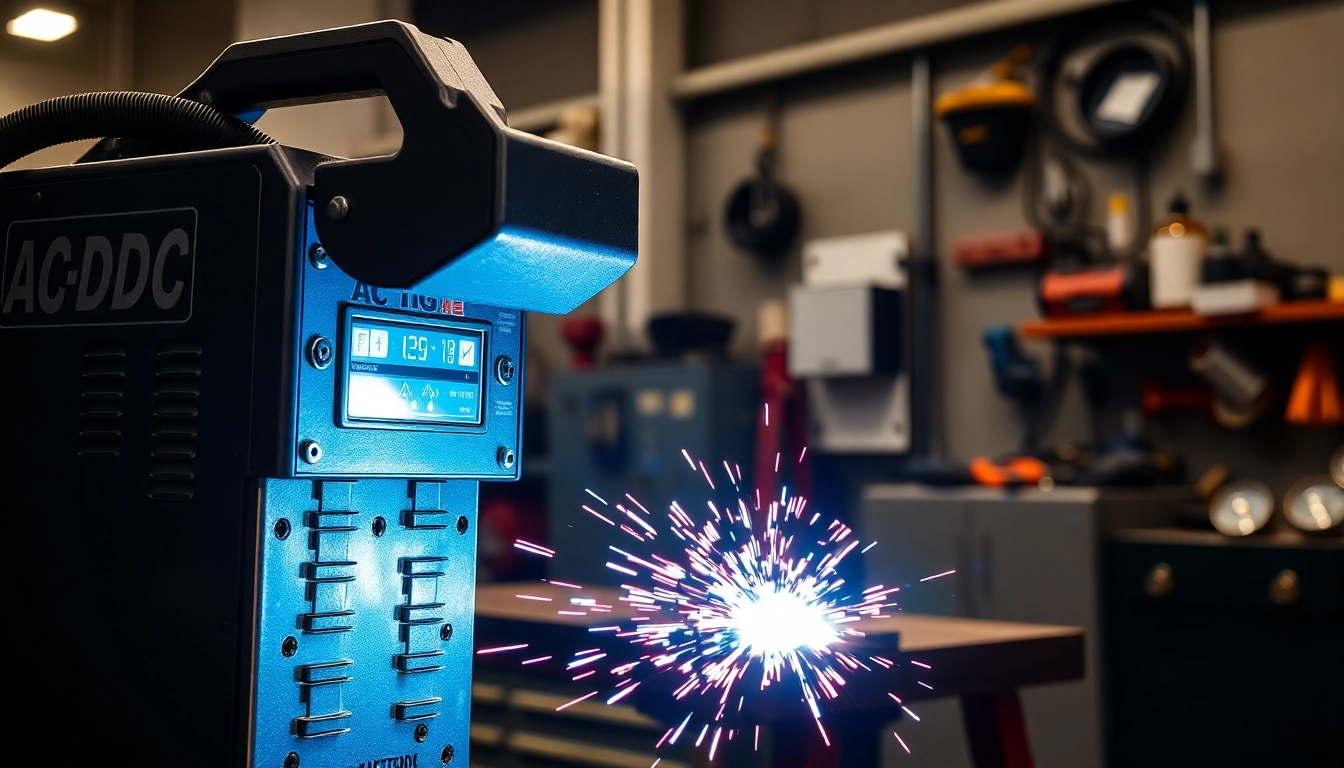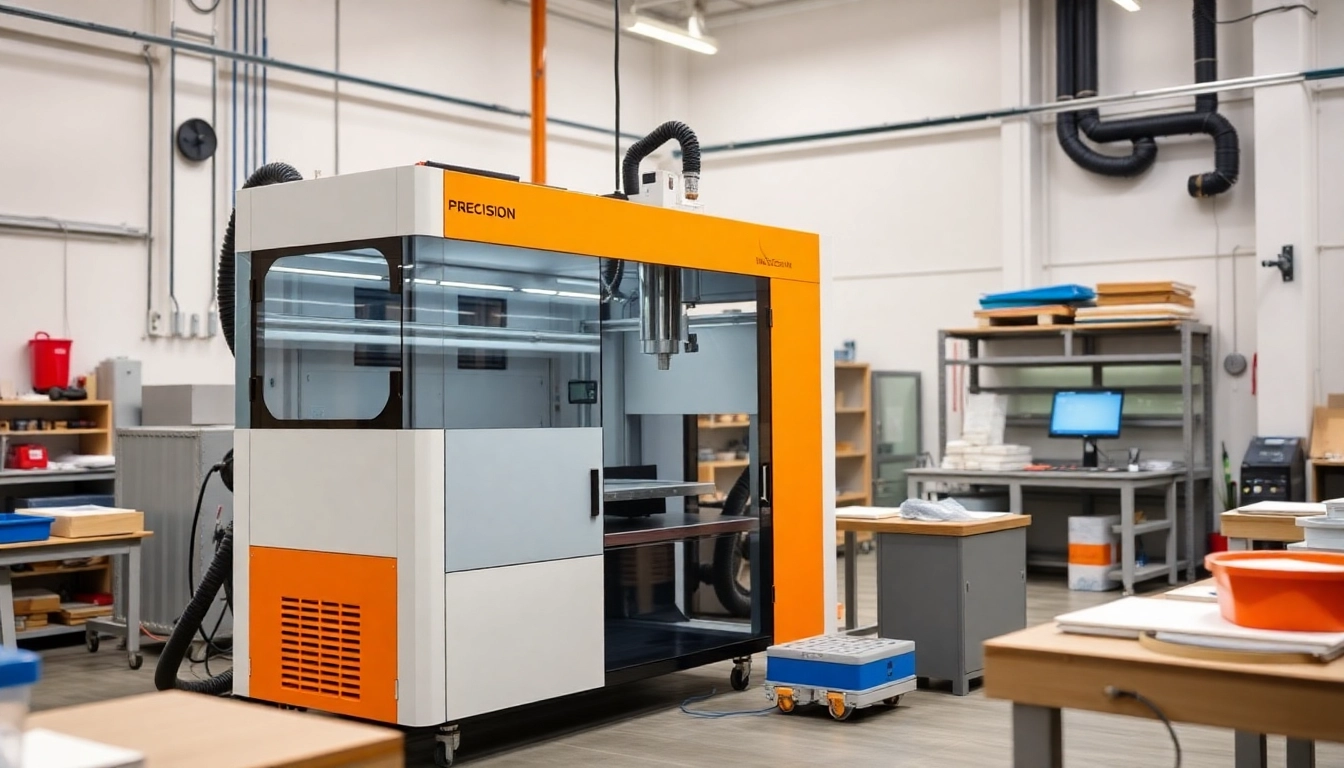What is an AC DC TIG Welder?
TIG welding, or Tungsten Inert Gas welding, is renowned for its precision and versatility, making it an ideal choice for various metalworking projects. Among the different types of welders available, the ac dc tig welder stands out due to its ability to operate on both alternating current (AC) and direct current (DC). This flexibility broadens the range of materials one can work with, from aluminum to thicker stainless steels.
Understanding the Basics of TIG Welding
TIG welding is a process in which a non-consumable tungsten electrode provides the heat necessary to melt and fuse metals together. This method offers exceptional control over the weld pool, producing fine, high-quality welds that require less finishing. The introduction of shielding gas, typically argon or a mixture of argon and helium, protects the weld area from contamination, ensuring strong, clean joins. The ability to switch between AC and DC power is critical; AC is generally used for aluminum and magnesium, while DC is preferred for welding steel and other ferrous metals.
Parts and Functions of AC DC TIG Welders
AC DC TIG welders are composed of several essential components:
- Tungsten Electrode: This non-consumable electrode creates the arc necessary for welding.
- Power Supply: This is where the welder is connected to the electricity needed to operate. It can provide both AC and DC currents.
- Welding Torch: The torch contains the tungsten electrode and enables the welder to control the heat and direction of the welding arc.
- Shielding Gas Supply: Gas flow prevents oxidation and contamination of the weld pool during the welding process.
- Foot Pedal or Torch Controls: They allow the welder to control the amperage and gas flow, offering precision during the welding operation.
Key Benefits of Using AC DC TIG Welders
Utilizing an AC DC TIG welder offers several advantages:
- Versatility: Can weld a wide range of materials, including ferrous and non-ferrous metals.
- Precision: Produces clean, strong welds with excellent control.
- Wide Application: Suitable for various industries, from automotive to aerospace, and craftwork.
- Efficiency: Reduces the need for additional finishing work due to quality weld output.
Choosing the Right AC DC TIG Welder for Your Needs
Factors to Consider Before Buying
When choosing an AC DC TIG welder, consider the following factors:
- Power Requirements: Ensure the welder’s output matches the specifications needed for your projects, typically measured in amps.
- Duty Cycle: This indicates how long the welder can be used continuously at a given amperage before it needs to cool down.
- Portability: If you plan on moving your welder frequently, consider its weight and size.
- Features: Look for models with adjustable settings, digital displays, and advanced features like pulse welding for versatility.
- Brand Reputation: Choose a reputable brand known for reliability and customer support.
Top AC DC TIG Welders Reviewed
Here are some top-reviewed AC DC TIG welders that cater to different needs:
- Everlast PowerTIG 200DV: A versatile welder known for its quality and affordability, offering both AC and DC capabilities.
- PrimeWeld TIG225X: Highly rated for its performance, equipped with a foot pedal and adjustable parameters, ideal for both beginners and professionals.
- Miller Multimatic 215: This inverter welder is perfect for those who require a multi-process machine—highly portable with user-friendly controls.
- Lincoln Electric Square Wave TIG 200: Renowned for its excellent arc stability and user-friendly features, making it ideal for welding aluminum.
Price Ranges and What to Expect
The price of AC DC TIG welders can vary dramatically based on features, power output, and brand. On average:
- Entry-level models start around $500–$1,000.
- Mid-range models typically range from $1,000–$2,500, providing more features and better performance.
- High-end models can exceed $2,500, offering advanced functionalities and suitable for professional applications.
Best Practices for TIG Welding
Setting Up Your AC DC TIG Welder
Proper setup is crucial for achieving high-quality welds. Follow these steps:
- Start by ensuring your work area is clean and organized, free of clutter and hazards.
- Connect the welder to an appropriate power source, ensuring that voltage and current settings are correct.
- Attach the correct tungsten electrode and ensure it is sharp and appropriately sized for your project.
- Set up a shielding gas supply, adjusting the flow rate to suit the material being welded.
- Choose the right filler rod if necessary and ensure it is compatible with the base metals.
Techniques for Effective Welding
Adopting proper techniques is vital for successful TIG welding:
- Maintain the Right Distance: Keep an optimal distance between the electrode and workpiece to ensure a stable arc.
- Control Your Speed: Adjust the movement of the torch to maintain consistent puddle size. Faster movements will produce less heat; slower movements allow for deeper penetration.
- Use the Right Angle: Hold the torch at a slight angle to direct the heat effectively and avoid contamination.
Common Mistakes to Avoid
Avoiding certain pitfalls can enhance your welding performance fundamentally:
- Poor Equipment Maintenance: Regularly check and clean your welder to avoid performance issues.
- Incorrect Settings: Always double-check your amperage and gas flow settings relative to the materials used.
- Neglecting Safety: Following safety protocols is essential, including using protective gear like gloves and helmets.
Maintenance Tips for Your AC DC TIG Welder
Regular Maintenance Checks
Maintaining your AC DC TIG welder ensures its longevity and performance. Regular maintenance should include:
- Inspecting cables and connectors for wear and damage.
- Cleaning the torch and ensuring that there’s no buildup of contaminants.
- Checking the gas supply and replacing bottles when necessary.
- Periodic calibration of the welder to ensure it operates within its specifications.
How to Clean and Store Your Welder
Proper storage and cleaning are key to keeping your welder in shape:
- Store the welder in a dry, clean area when not in use to prevent rust and damage.
- Before storage, clean all parts, including the torch and cables.
- Cover the welder to protect it from dust and environmental factors.
Troubleshooting Common Issues
Even the best machines can encounter problems. Here’s how to troubleshoot common issues:
- Welding Arc Is Unstable: Check gas flow and electrode condition as both could lead to inconsistent arcs.
- Poor Penetration: Ensure correct amperage is set and that your travel speed isn’t too fast.
- Burnback: Adjust the length of the tungsten electrode protruding from the nozzle.
Advanced Applications of AC DC TIG Welders
Welding Different Metal Types
AC DC TIG welders shine in their capability to handle diverse materials:
- Aluminum: Requires AC welding due to its oxide layer. The alternating current cleans the oxide and provides excellent welds.
- Stainless Steel: Best welded using DC for stronger and cleaner seams.
- Magnesium: Like aluminum, it requires an AC process, making AC DC welders suitable for complex fabrications.
Innovative TIG Welding Techniques
Several advanced techniques enhance the traditional TIG welding process:
- Pulsed TIG Welding: This method reduces heat input and enhances control over weld pool, thereby decreasing distortion.
- Dynamic Gas Flow: Adjusting gas flow rates during welding helps adapt to different material types and thicknesses.
- Dual Pulse TIG: A combination of different pulsating patterns can provide enhanced control over the molten pool.
Industry-Specific Applications and Examples
AC DC TIG welders see widespread usage across numerous sectors:
- Aerospace: Required for high-strength components and assemblies, where quality is paramount.
- Automotive: Used extensively for exhaust systems and components requiring precise fabrication.
- Art and Sculpture: Artists utilize TIG welding for intricate designs, often in stainless steel materials.


